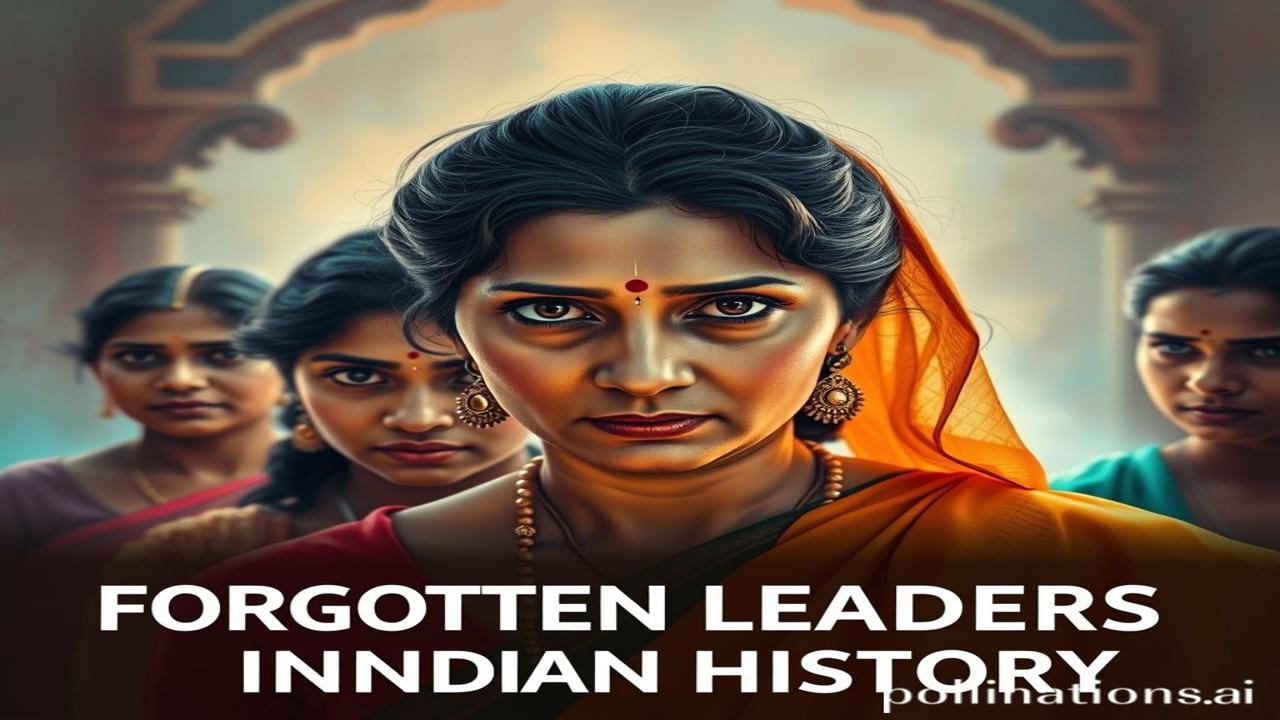Waqt Ki Dhool Mein Dabi, Bharat Ki Shakti: Forgotten Women Leaders in Indian History
Kabhi socha hai, jo rangoli maa ne aaj banayi hai, uske peeche kitni auraton ne apne haathon se Bharat ki kahani likhi hogi? Waqt ki dhool mein kuch aise naam chhup gaye hain, jinhe yaad karna humara farz hai. Let’s uncover the stories of forgotten women leaders in Indian history – women who shaped our nation but whose voices have been muted over time.
Historical & Cultural Context: The Invisible Pillars
This isn’t just about filling gaps in history books; it’s about recognizing the true architects of our culture. For centuries, Indian society – while patriarchal in many ways – also held spaces for women of immense power and influence. We are talking about rulers, warriors, scholars, and social reformers who dared to challenge the status quo.
From the Vedic era to the colonial period, women played pivotal roles. But their stories often get overshadowed. Think about it – we know Chandragupta Maurya, but how many of us know his nani, the shrewd and politically astute Maharani Murā? These women weren’t exceptions; they were part of a rich tapestry of female leadership. Dates and battles are important, but so are the lives of these veeranganas (brave women) who fought for their people and their beliefs.
ज़मीनी सच – लोग और जीवन: Stepping into Their Shoes
Imagine a day in the life of Rani Abbakka Chowta (16th century), the Queen of Ullal in Karnataka. She refused to pay tribute to the Portuguese and led her army, riding elephants and striking fear into the hearts of her enemies. Visualize her, clad in simple cotton, strategizing with her generals, her voice resonating with courage and determination.
“Hum apni dharti, apni sanskriti ko bachayenge,” she might have declared, her eyes blazing with fiery resolve.
Then there’s Didda, the Queen of Kashmir (10th-11th century). Crippled in one leg, she defied expectations to become a powerful ruler. People whispered stories of her intelligence and ambition. “Kashmir sirf mera nahi, yeh mere logon ka hai,” she might have proclaimed, focusing on the welfare of her kingdom, skillfully navigating treacherous political landscapes.
These women weren’t just figures in textbooks; they were real, breathing individuals with dreams, fears, and unwavering commitment.
धरोहर और पहचान: Echoes of Shakti Today
The spirit of these forgotten women resonates even today. We see echoes of their bravery in the women who lead movements, break barriers, and challenge injustice. Their legacy lives on in the girls who dare to dream beyond societal expectations.
Think about the women farmers protesting for their rights, the scientists pushing the boundaries of knowledge, the artists using their voices to create change. These are all manifestations of the Shakti (power) that these forgotten leaders embodied. Recognizing their contribution to our history enriches our understanding of Bharatiyata (Indianness) and strengthens our modern identity. We need to make their stories ghar ghar ki kahani (a story known in every home).
मजेदार तथ्य या भ्रम-भंजक: Myth-Buster Alert!
Log samajhte hain ki Mughal kaal mein auraton ki koi aawaz nahi thi. Lekin asli sach yeh hai ki Gulbadan Begum, Humayun ki behan, ne Humayun-Nama likhkar Mughal Itihas ki ek important perspective pesh kiya. She wasn’t just a royal woman; she was a historian, a writer, and a vital chronicler of her time.
दृश्य और भावनाएं: A Sensory Journey
Imagine the sounds of Rani Abbakka’s army, the rhythmic beat of drums, and the roar of elephants charging into battle. Feel the heat of the sun on Didda’s face as she surveys her kingdom from the mountaintops. Smell the spices and sandalwood of the bustling markets in their kingdoms. These sensory details bring their stories to life and connect us to their world.
अंतिम विचार या उद्धरण: A Call to Remember
Let us remember the words of the great poet Subhadra Kumari Chauhan:
“खूब लड़ी मर्दानी वह तो झाँसी वाली रानी थी।”
But let us also remember the other mardani (brave women) who have been forgotten. Their stories are a testament to the strength, resilience, and leadership of women in India. Let us strive to ensure their legacies are never forgotten again. It’s time to bring them out of the waqt ki dhool (dust of time) and into the light.
